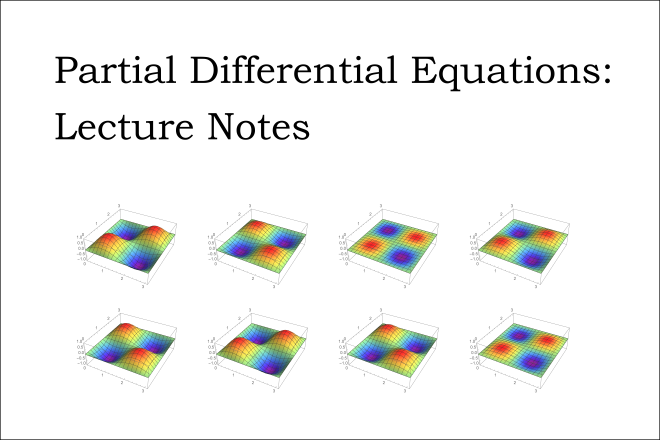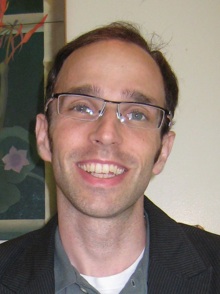Partial Differential Equations: Lecture Notes

Credit: Image adapted from a figure by Christopher Griffin and is licensed under CC BY-NC-SA 3.0 US
Resource Description
This is a set of lecture notes for MATH 412, Penn State's undergraduate Partial Differential Equations course. Partial differential equations underpin every physical theory we have of the universe. They represent one of the greatest achievements of human intellect. If we think of Calculus as the mathematics of change, then partial differential equations is a course about finding unknown functions describing the universe when many things are changing simultaneously (position, clock time etc.). The Heat Equation describes how heat flows through bodies, explains the diffusion of smells in the air and forms the basis for a form of the Schrödinger Equation of Quantum Mechanics. The Wave Equation describes the motion of membranes and strings, as well as describing radiating electromagnetic waves, which make it possible to use your cell phone. Nonlinear partial differential equations like Burger's Equation and the Navier-Stokes Equations describe such phenomena as traffic flow and complex fluids. Even Einstein's General Theory of Relativity boils down to a system of fiendishly difficult non-linear partial differential equations. The uses for PDEs are not limited to physics, the Black-Scholes derivative model in finance hides a partial differential equation (a Fokker-Plank equation) and economists often encounter PDEs as a result of the Hamilton-Jacobi-Bellman Equation from optimal control. Put simply, if you want to understand the Universe, it seems that they only way to do it is to use partial differential equations.
In order to use these notes successfully, you should have taken Calculus I - IV (MATH 140, 141, 230 and 250 at Penn State), covering Vector Calculus and Elementary Ordinary Differential Equations. I will briefly review some of the information you need from these courses, but it's not going to be a substitute for having covered the material.

